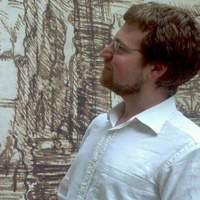Geoff Lehman
Bard College Berlin, No departments, Faculty Member
- Art History, Philosophy, Art Theory, Visual Arts, Renaissance Art, Italian Renaissance Art, and 11 moreNorthern Renaissance Art, Leonardo da Vinci, Pieter Bruegel the Elder, Renaissance Studies, Landscape, Perspective, Phenomenology, Greek Archaeology, Greek and Roman Art and Architecture, English Renaissance Literature, and Shakespeareedit
Titian’s Allegory of Marriage depicts an equivocal moment of intimacy through a network of visual and tactile interactions. This dialectic of touch and vision evokes a range of embodied experiences that, through empathetic identification,... more
Titian’s Allegory of Marriage depicts an equivocal moment of intimacy through a network of visual and tactile interactions. This dialectic of touch and vision evokes a range of embodied experiences that, through empathetic identification, also implicate the viewer and define a phenomenology of viewer response. Furthermore, the interplay of optical and haptic values invokes Titian’s painterly practice itself, mediating between the picture as window and the brushstroke as touch. The interpretive possibilities of this dialectic culminate in the crystal sphere, a discrete object receptive to human touch that also relates abstractly to the scattering of light in space, suggesting a more radical phenomenology of intimacy that transcends the limitations of bodily Gestalt and the separation between picture and viewer alike.
Keywords:
Intimacy, phenomenology, linear and painterly, the oneiric in art, viewer response
Keywords:
Intimacy, phenomenology, linear and painterly, the oneiric in art, viewer response
Research Interests:
Pieter Bruegel the Elder and William Shakespeare each create profoundly philosophical works through the representation of a broad range of human perspectives within a shared world. In Bruegel's pictures (the Procession to Calvary, the... more
Pieter Bruegel the Elder and William Shakespeare each create profoundly philosophical works through the representation of a broad range of human perspectives within a shared world. In Bruegel's pictures (the Procession to Calvary, the Labors of the Months, and others), the variety of his figures' literal viewpoints suggests an equally wide range of physical, social, affective, and intellectual experiences. And the coordination of these viewpoints with each other, as well as their embeddedness in their spatial and landscape context, can define an epistemology (perspective as cognitive metaphor), an ethics (viewpoint in relation to compassion), or even a metaphysics (engaging the presence of the infinite in the physical world). Shakespeare's descriptions of perspective are equally charged with metaphoric resonances, creating something like Bruegelian painting in words. Perspectival pluralism in Shakespeare often suggests, in the epistemic register, the interplay of truth and deception (Richard II, Twelfth Night), while the coordination of (in)commensurable viewpoints raises questions of justice and of compassion (Twelfth Night, The Winter's Tale) analogous to those in Bruegel. In some of his later plays (King Lear, Cymbeline, The Winter's Tale), Shakespeare's ekphrastic descriptions of perspective views take on a phenomenological character, as the literal (optical) and metaphorical (cognitive, affective) aspects of this kind of looking are conceived in terms of an embodied experience with precise physiological effects. This phenomenology of perspective, a human encounter with the infinite through looking, metaphorically articulates moments of extreme affect in a style that is also, paradoxically, elaborately artificial, offering commentary on Shakespeare's art itself.
